Where Does Gold Come From? Origins, Formation, and Future Prospects
23/02/2024Daniel Fisher
Free & fully insured UK Delivery. Learn more
Secure & flexible payments. Learn more

Buyback Guarantee Learn more

Gold is undoubtedly the best-known precious metal in every corner of the world. From adorning ancient artifacts to serving as the standard for wealth and currency, gold holds a special place in our collective consciousness.
But have you ever wondered where this precious metal comes from? How is it formed, where is it found, and could it be mined in outer space?
We will delve into gold’s origins, tracing its path from the depths of space to the Earth’s crust and ask the question whether gold could one day be synthesized.
Gold’s enduring appeal over millennia is due to a combination of its relative rarity and the unique properties it possesses. It makes sense then that gold isn’t a common element found naturally on earth, otherwise it would be neither rare nor unique! In fact, the yellow metal doesn’t originate on the Earth at all, it arrived here from outer space.
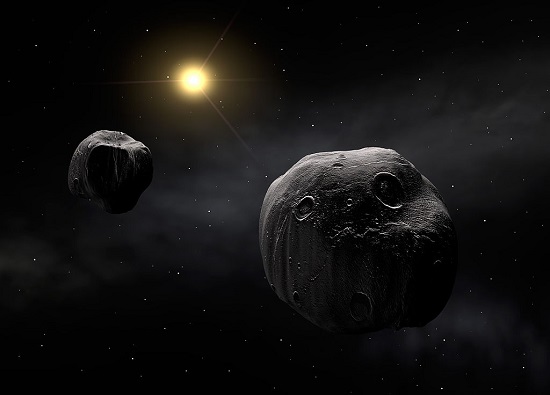
Gold, like many elements, has a cosmic origin story. It traces its roots back to the fiery furnaces of dying stars, where the extreme conditions of supernova explosions forge heavy elements like gold from lighter ones. These newly formed gold atoms are flung out into space, eventually finding their way into clouds of gas and dust where new stars and planetary systems are born.
In the early days of our solar system, these precious gold atoms were incorporated into the raw materials that coalesced to form planets, including our own Earth. Some scientists believe that a significant portion of Earth’s gold arrived via meteorite bombardment during its tumultuous early history. Either way, it’s interesting to know that the formation of gold took place long before our planet was formed.
So, in a sense, gold comes from the depths of space, traveling across vast distances and time to grace our planet with its presence. But while its origins may be celestial, its journey on Earth is just as fascinating, as it undergoes a series of geological processes to become the glittering metal we know and cherish.
While gold atoms contributed to creating the Earth with possibly more subsequently arriving within meteors, it took millions of years of geology to evolve into gold deposits. It begins deep within the Earth’s crust, where intense heat and pressure work their magic on the ingredients needed to create gold.
One of the primary ways gold forms is through hydrothermal processes. In these scenarios, hot fluids rich in dissolved minerals, including gold, rise from deep within the Earth’s mantle. As these fluids move through cracks and fissures in the crust, they encounter cooler conditions, causing the minerals, including gold, to precipitate out and accumulate over time.
Another important process for gold formation is magmatic activity. Molten rock, or magma, carries dissolved metals, including gold, as it rises towards the Earth’s surface. As the magma cools and solidifies, these metals can crystallize out, forming veins or deposits of gold-bearing minerals within the surrounding rocks.
Both hydrothermal and magmatic processes require specific geological conditions, such as the presence of certain rock types and the right temperature and pressure regimes. It’s this intricate interplay of factors that ultimately determines where and how gold deposits form.
Over millions of years, geological forces like tectonic movements, erosion, and weathering expose these gold deposits at the Earth’s surface, where they can be discovered and mined by humans. The gold we convert into jewellery, bullion, and ornaments is a testament to the remarkable forces at work deep within our planet.
Free ultimate guide for keen precious metals investor
Gold is spread across the entire planet rather than being concentrated in one particular area. Not only that, but the environment, local geography and type of gold deposit can vary depending on the method in which it formed. Gold deposits can be split into Primary and Secondary sources.
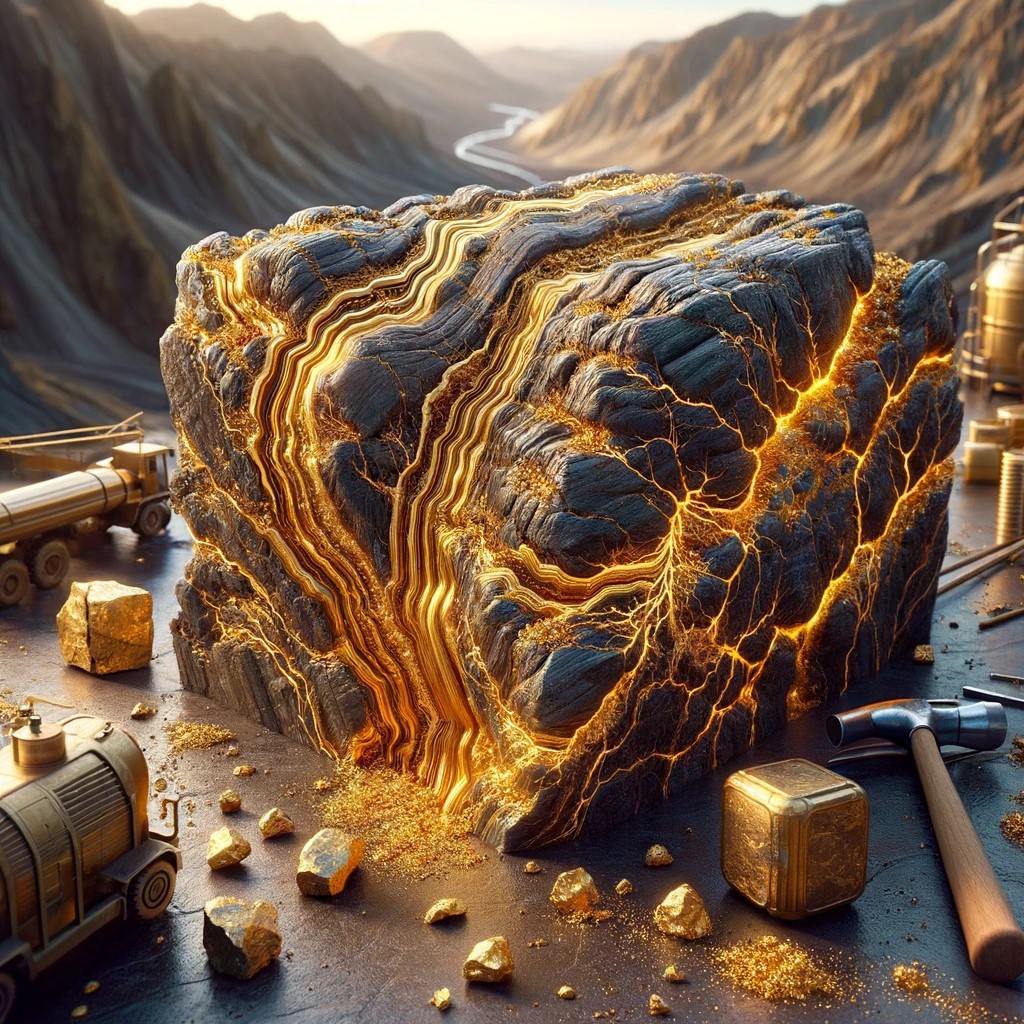
Primary gold deposits are the result of geological processes deep within the Earth’s crust. They are therefore typically located along the boundaries of tectonic plates or in regions with volcanic activity, as extreme heat and pressure are necessary for this kind of formation.
Deposits form when gold-rich fluids, often associated with hot magma or hydrothermal activity, move through cracks and fractures in the rock. As these fluids cool and interact with surrounding minerals, they deposit their load of gold along with other metals in the cracks and fractures.
One common type of primary gold deposit is called a vein deposit. These occur when gold-carrying fluids fill fractures or fissures in the rock, forming veins of gold-bearing minerals such as quartz. Over time, these veins can accumulate significant amounts of gold, creating valuable ore deposits.
Another type of primary gold deposit is known as a disseminated deposit. In these deposits, small particles of gold are scattered throughout the surrounding rock, rather than concentrated in veins. Disseminated deposits often form in association with certain types of igneous rocks, where gold is dispersed in tiny grains within the rock matrix.
Exploring and mining primary gold deposits can be challenging, as they are often located deep underground and may require complex mining techniques to extract the gold-bearing ore. However, primary deposits are often the richest sources of gold, containing high concentrations of the precious metal, known as high gold grade.

Secondary gold deposits, occur through the weathering and erosion of existing gold-bearing rocks and minerals. These deposits represent a fascinating aspect of the gold cycle, where nature’s forces redistribute and concentrate gold in new locations.
Over time rocks containing primary gold deposits can be broken down through erosion, weathering, and water, freeing the precious metal and transporting it downstream through rivers and streams.
As gold is heavy and resistant to corrosion, it tends to settle out and accumulate in certain areas along riverbeds, stream channels, or in the sediment of river valleys. These accumulations, known as placer deposits, often contain concentrations of gold particles, nuggets, or flakes that have been eroded from primary deposits and sorted by the flow of water.
Secondary gold deposits can also form through the chemical alteration of primary gold-bearing minerals near the Earth’s surface. In this process, known as supergene enrichment, weathering and groundwater activity can dissolve and re-deposit gold in new locations, often concentrating it in specific zones within the rock.
Mining secondary gold deposits often involves techniques such as panning, sluicing, or dredging to extract gold particles from the sediment or bedrock. While secondary deposits may not contain the same abundance of gold as primary deposits, they still represent significant sources of this precious metal and have played a crucial role in human history and economies worldwide.
Gold deposits are scattered across the globe with some regions boasting extensive gold reserves, while others have little to none. The geological processes necessary to form gold dictate which regions in the world deposits are most concentrated.
Much of the world’s gold is found in regions with ancient geological formations, such as Archean greenstone belts, where gold-bearing rocks are abundant. These belts, formed billions of years ago, provide ideal conditions for the concentration of gold.
Other significant gold-producing regions include areas with active or historic tectonic activity, such as the Pacific Rim’s “Ring of Fire” and the Andean mountain range. Here, geological processes like volcanic activity and tectonic collisions create the conditions necessary for gold deposition.
Additionally, certain types of rock formations, such as quartz veins and sedimentary rocks like conglomerates, often host substantial gold deposits. These formations act as natural reservoirs, trapping gold over geological time scales.
Some of the world’s largest gold-producing countries include South Africa, Australia, the United States, Russia, and China. These countries are home to extensive mining operations that extract gold from various geological formations.
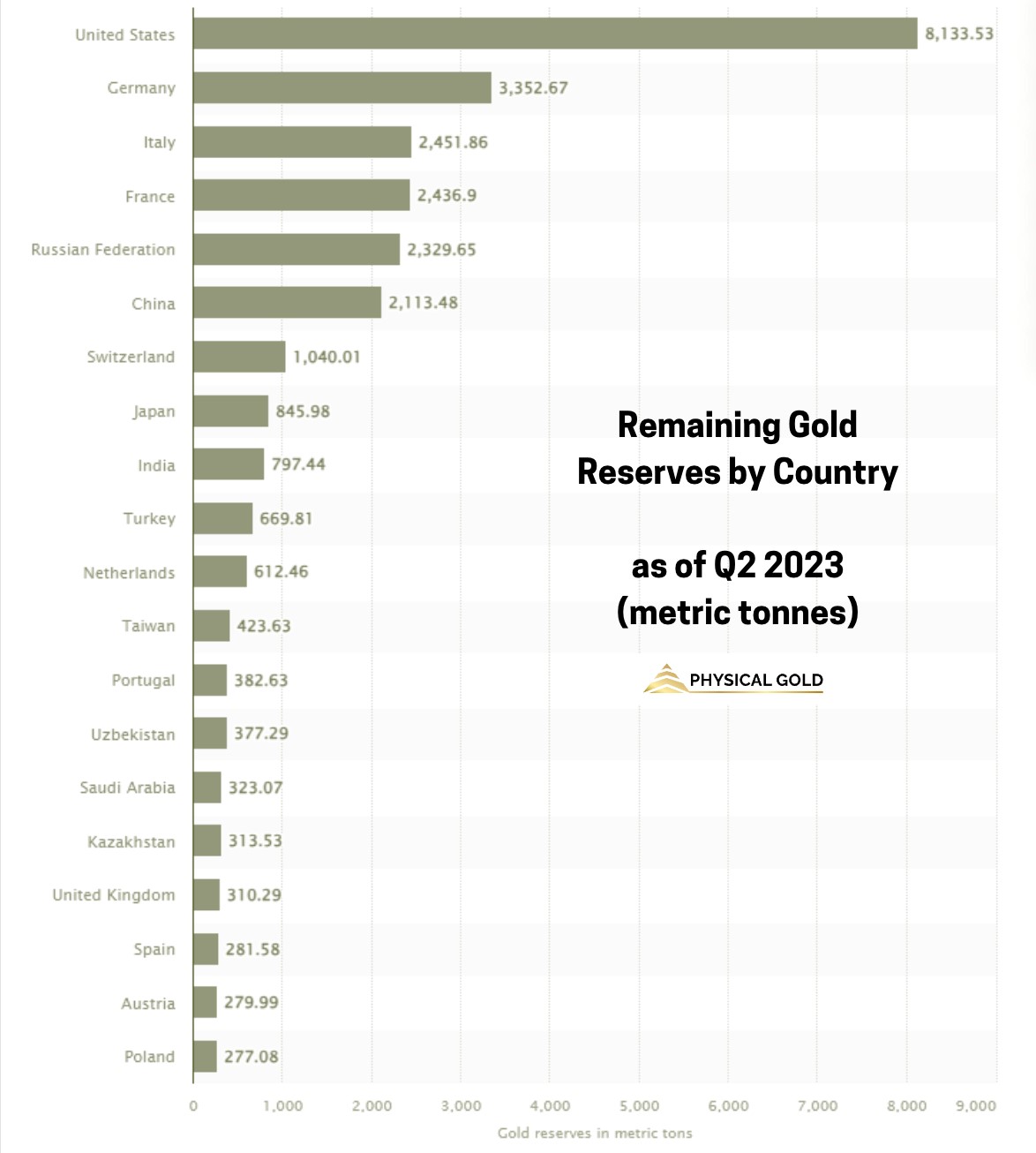
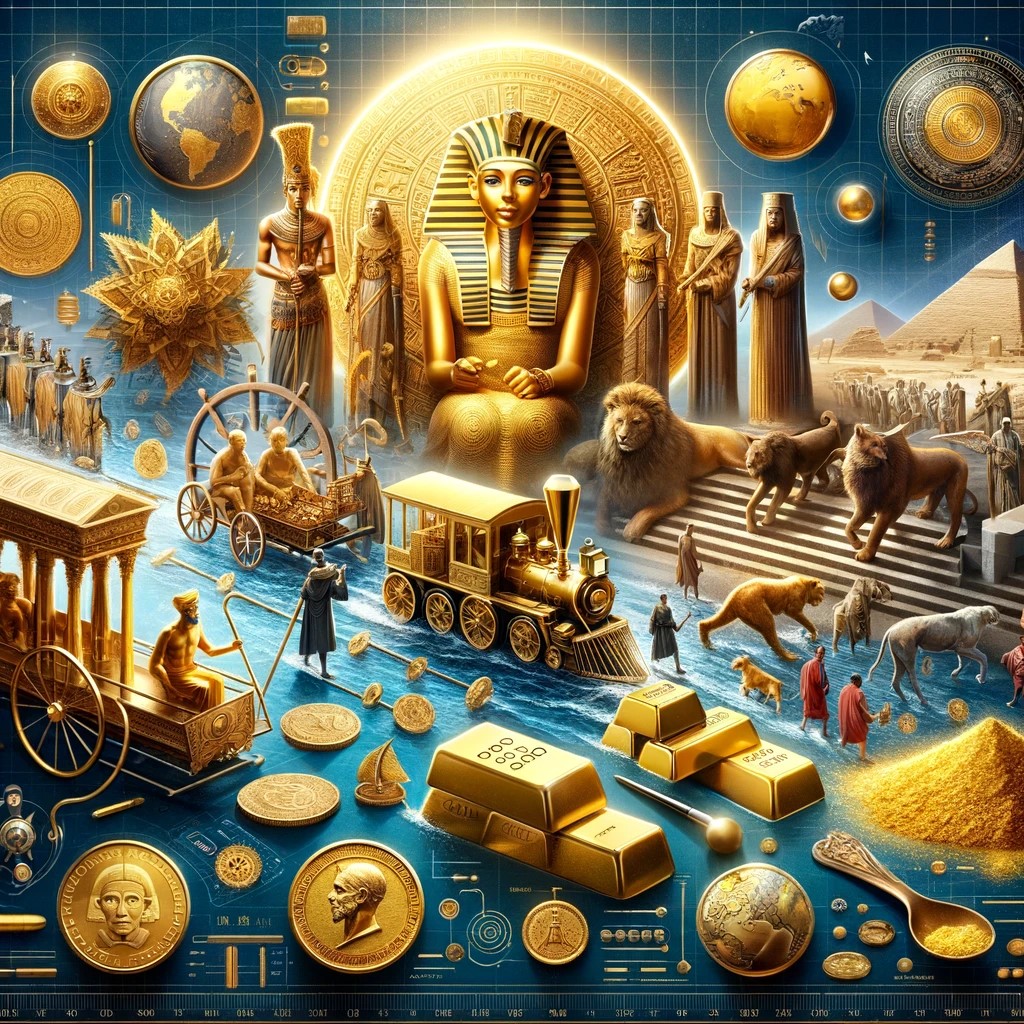
Despite gold being held within the earth for billions of years, it was first discovered around 4000BC in ancient Mesopotamia and Egypt. It likely occurred when early humans encountered shiny gold nuggets in stream beds while gathering water or hunting.
The allure of this bright, malleable metal would have been immediately apparent, leading ancient peoples to begin collecting and using it for decorative purposes. Over time, as civilizations developed, the mining and refining of gold became more sophisticated, leading to its use as a form of currency and a symbol of wealth and power in various cultures around the world.
The Age of Exploration in the 15th and 16th centuries led to the discovery of new gold-rich regions in the Americas, fuelling European economies and global trade networks. Gold rushes in the 19th century, such as the California Gold Rush of 1848, further intensified the search for this precious metal.
With gold’s presence on earth being attributed to the planet’s initial formation and the possibility of rare comets contributing deposits, it seems that there may be a finite amount of gold in the world. But is it possible that we could obtain new sources of gold either by mining in space, new gold-laden comets reaching earth, or in fact create more gold in a lab!?

The concept of mining gold in space may sound like science fiction, but it’s becoming an increasingly plausible idea. With the growing interest in space exploration and the development of advanced technologies, mining asteroids and other celestial bodies for precious metals like gold is no longer just a dream.
Asteroids, in particular, are known to contain significant amounts of gold and other valuable minerals, making them potential targets for future mining operations. Companies and space agencies are already exploring the possibilities of asteroid mining, envisioning a future where resources extracted from space could help meet the growing demand for precious metals on Earth.
While the technical and logistical challenges are immense, the prospect of mining gold in space represents a new frontier in human exploration and resource utilization.
If they’ve brought us gold before, then maybe more will come?
Meteorites, remnants of asteroids and other celestial bodies that have collided with Earth’s surface, offer a potential source of future gold deposits. These extraterrestrial rocks often contain a variety of metals, including gold, which were formed during the early stages of our solar system’s formation.
While current mining technologies are not equipped to extract gold from meteorites on a large scale, advances in space exploration and resource extraction may pave the way for future mining operations. With growing interest in asteroid mining and the development of space technologies, extracting gold from meteorites could become a reality in the future.
However, the practical and logistical challenges of space mining, including transportation and extraction methods, remain significant hurdles to overcome. Nonetheless, the prospect of tapping into these cosmic reservoirs for precious metals presents an intriguing avenue for future exploration and resource utilization.

Scientists are already creating synthesized meat in labs in an attempt to reduce the global strain on livestock farming and the environment. So why not also, manufacture gold?
Through nuclear reactions, it is theoretically possible to transmute certain elements into gold, albeit at tremendous energy costs. However, practical synthesis of gold on a meaningful scale remains elusive and economically unfeasible.
Scientists have successfully produced minute quantities of gold through nuclear reactions, primarily using particle accelerators, but the process is highly inefficient and far from cost-effective. Additionally, the stability and purity of synthesized gold are often compromised, rendering it unsuitable for practical applications.
While the concept of synthesizing gold continues to intrigue scientists, the alchemical quest for turning base metals into gold remains more myth than reality in the modern age.
Gold originates from cosmic events like supernovae and neutron star collisions. Formed through nuclear reactions, gold atoms scatter through space and are incorporated into Earth’s raw materials. Accessible via mining and asteroid bombardment, gold’s origins span billions of years.
A placer gold deposit is a concentration of gold particles found in riverbeds, streambeds, or alluvial plains. These deposits form through erosion and transportation processes, as gold particles are carried by water and accumulate in specific areas due to their weight. Miners historically extract gold from placer deposits using techniques like panning and sluicing.
Gold originates from the depths of space, formed during supernova explosions billions of years ago. It arrived on Earth through meteorite bombardment and became embedded in the planet’s crust over geological time scales.
Gold on Earth is primarily formed through geological processes like hydrothermal and magmatic activity. Hot fluids rich in dissolved minerals, including gold, rise from deep within the Earth’s mantle and deposit gold in specific geological settings.
Gold formation takes millions to billions of years. Through geological processes like hydrothermal and magmatic activity, gold slowly accumulates in deposits over vast timescales. While specific timelines vary depending on geological conditions, it typically takes millions of years for minable gold deposits to form, making gold a precious and finite resource.
Image credits: Wikimedia Commons, Statista, and James St John
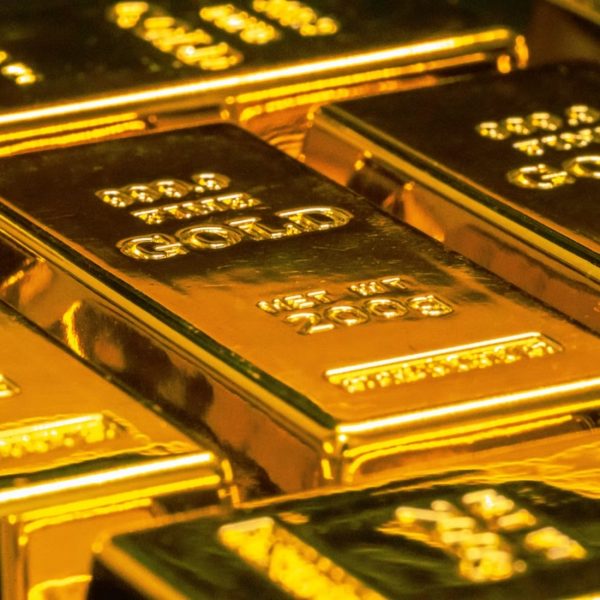
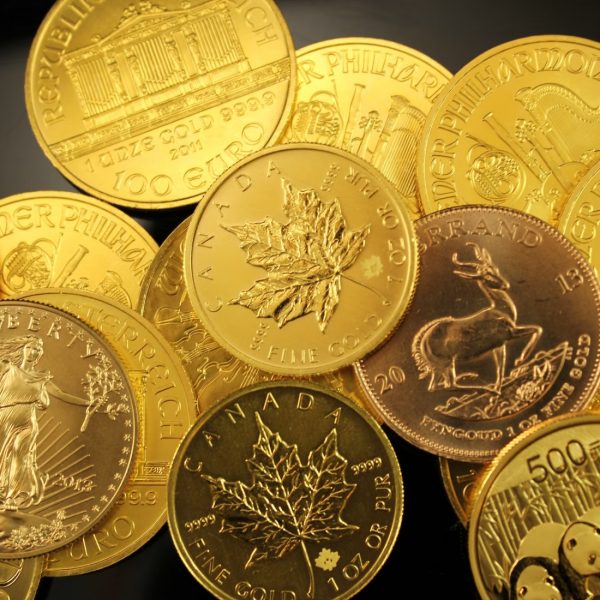
Live Gold Spot Price in Sterling. Gold is one of the densest of all metals. It is a good conductor of heat and electricity. It is also soft and the most malleable and ductile of the elements; an ounce (31.1 grams; gold is weighed in troy ounces) can be beaten out to 187 square feet (about 17 square metres) in extremely thin sheets called gold leaf.
Live Silver Spot Price in Sterling. Silver (Ag), chemical element, a white lustrous metal valued for its decorative beauty and electrical conductivity. Silver is located in Group 11 (Ib) and Period 5 of the periodic table, between copper (Period 4) and gold (Period 6), and its physical and chemical properties are intermediate between those two metals.